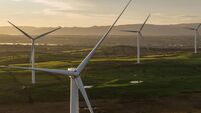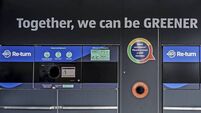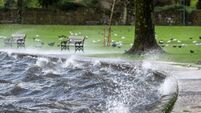Cork Harbour at centre of renewable energy revolution
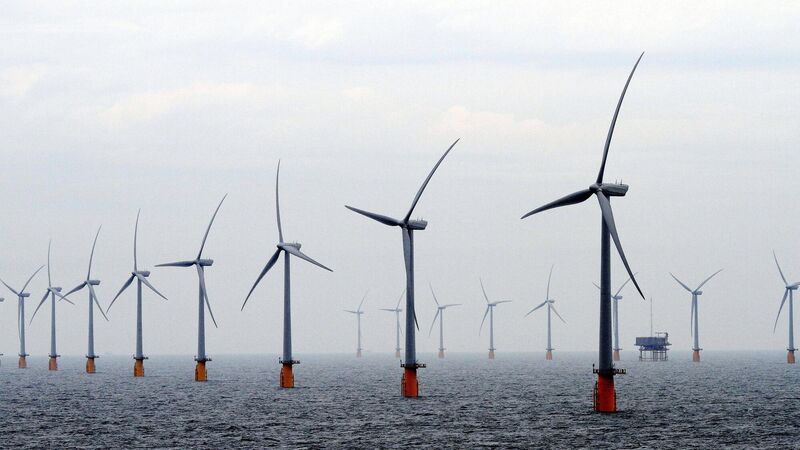
An Offshore Wind Farm off the coast of Ramsgate in Kent. Ireland achieved 40% renewable electricity in 2020, with onshore wind energy at the forefront of the push, according to the Sustainable Energy Authority of Ireland (SEAI). File Picture: PA
You cannot see it, but you can definitely feel it. It can annoy, infuriate, and exhaust in equal measure.
However, as the people of Cork Harbour, and Ireland, wonder at times why God, Mother Nature, or the Universe gave us wind in seemingly endless quantities, it may finally become clear in the coming years.
Cork Harbour and its surrounding coastline can be at the centre of a renewable energy revolution as the world moves away from fossil fuels, with offshore wind and hydrogen leading the way.
It is not hyperbole, according to leading business figures in the region.
Pearse Flynn is a Ballycotton native who made an estimable fortune in the world of tech, telecoms, and debt solutions, among other ventures. He is, by any stretch of the imagination, a successful entrepreneur known across the business world, from Ireland to Europe to the US.
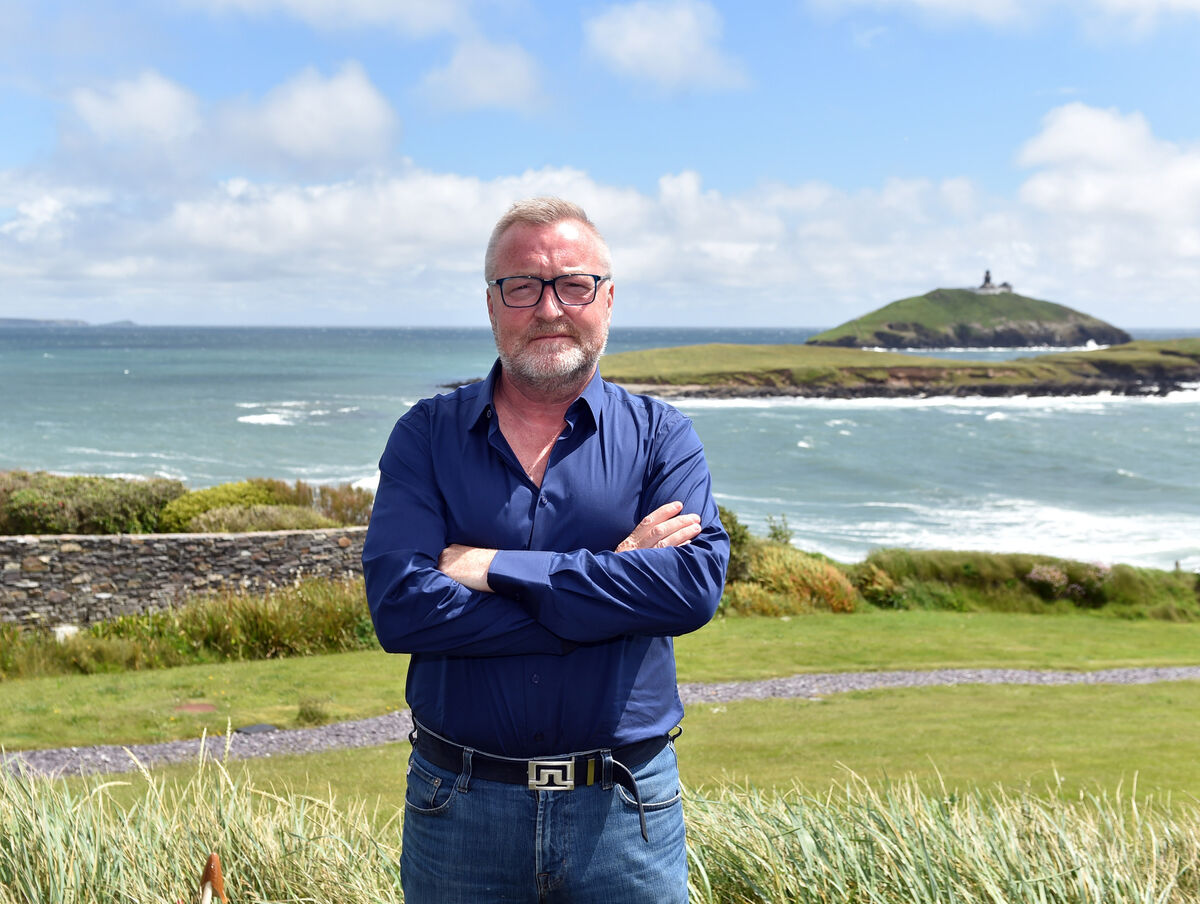
He is convinced that wind and hydrogen can be for Cork and the wider island as oil has been for the likes of Norway and Saudi Arabia.
To the doubters, it is worth harking back to the 1960s and 1970s when a little island that could — on the fringes of Western Europe, struggling to shake off the shackles of 800 years of colonial occupation and establishing its own economic identity — decided to do what it could to attract foreign firms to its shores.
With the help of the IDA and generous corporations tax incentives, global pharmaceutical and biopharmaceutical behemoths came to Cork and found a willing, able, and welcoming workforce eager to play its part in the ever-burgeoning industry.
With almost a dozen of the largest pharmaceutical firms in the world employing thousands over the years, Cork then got in on the global tech boom.
While the likes of Facebook, Google, and Intel went to the east coast, Cork had Apple and EMC in its arsenal.
Wind and hydrogen dwarf the pharmaceutical and tech potential for Cork and the regions, according to Mr Flynn.
However, time is of the essence, he told the .
“There is no God-given right for the people who currently dominate energy in the world to also dominate energy in the renewable world. We have this opportunity to really for generations to drive our sovereign wealth. Norway did it in the 1960s and 1970s with oil, when Britain also had an opportunity. Norway did it much better and look at the standards of living there today.
“This is honestly potentially miles bigger than the 1960s and 1970s when we crafted FDI policies to attract pharmaceuticals and other companies to come here. Our ambition must be far bigger than just generating renewable energy simply to power ourselves on the island. That would be akin to being in Saudi Arabia in the 1970s and deciding to just generate enough oil to use ourselves. For oil, read wind,” he said.
By that, he means generating enough power through wind and hydrogen to share it with our European neighbours.
Mr Flynn’s firm EI-H2 last month announced plans for Ireland’s first green hydrogen facility. The firm will seek planning for a €120m 50MW electrolysis plant in Aghada which it says will remove 63,000 tonnes of carbon emissions annually from Irish industry and power generation.
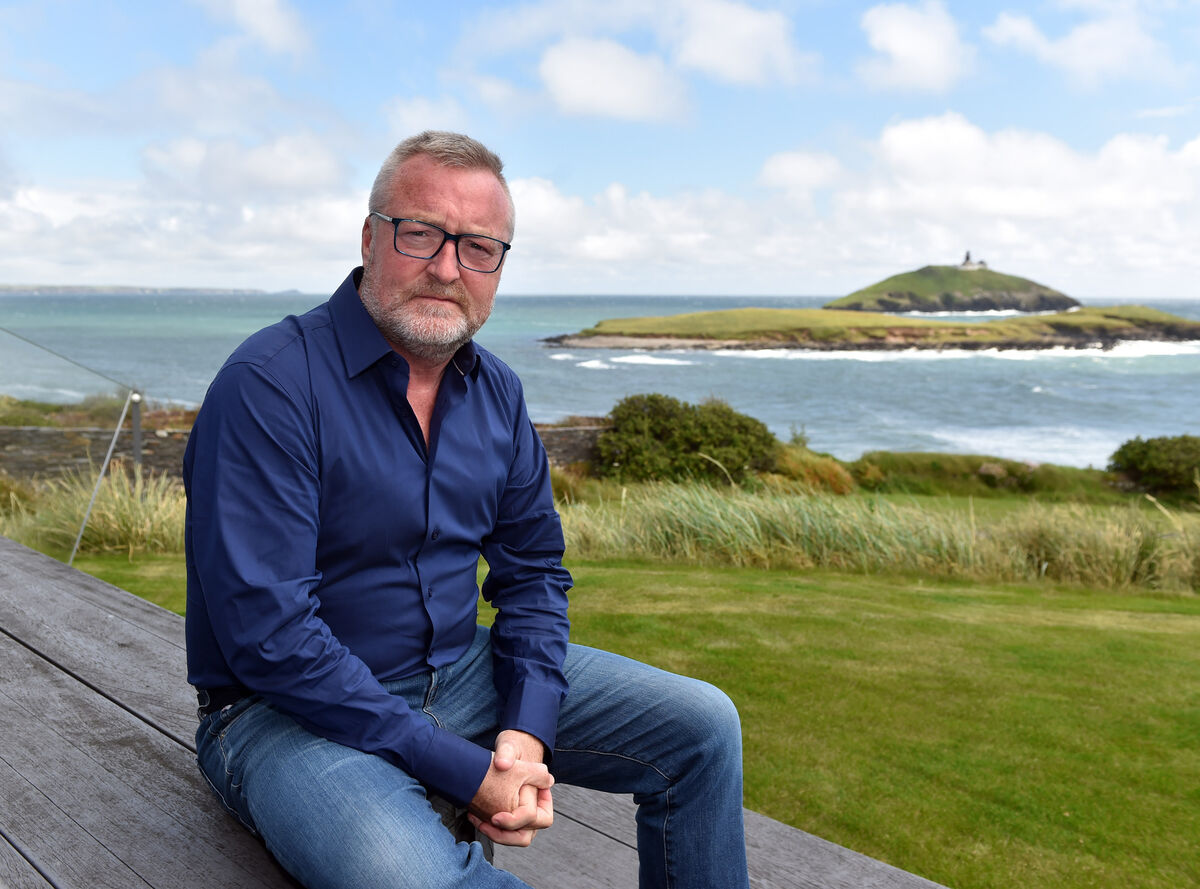
Upon completion, the site will be one of the biggest green energy facilities of its kind in the world.
Speaking at his home in Ballycotton, where the sun is glistening but the winds are howling on a June morning, Mr Flynn said the burgeoning industry has the potential to be generational for the Irish people, with Cork playing a starring role.
“We have a great wind profile. There are more than 60 windfarm applications right now. A lot of people don’t know that. But that isn’t nearly enough to what we can achieve.”
Ireland achieved 40% renewable electricity in 2020, with onshore wind energy at the forefront of the push, according to the Sustainable Energy Authority of Ireland (SEAI).
The industry's representative group, Wind Energy Ireland, said the efforts also cut around 4m tonnes of carbon emissions.
Then acting chief executive, Noel Cunniffe of WEI, said in April that more than 5,000 people work in the industry, which could rise to more than 7,000 if the targets set for onshore wind in the Climate Action Plan are reached.
Windfarms are already worth over €400m to the economy every year and can rise to €550m by the end of the decade, he said.
That is not even considering the related but entirely separate potential of offshore wind, he said.
"Over the next 10 years, we will build on two decades of experience to double our onshore wind capacity while applying that expertise to build an entirely new offshore energy industry," he said.
Back in Cork, Mr Flynn said we have to not just flirt with potential offshore wind investors, but do far more to actively encourage them. By doing so, Cork Harbour could become a beacon for the rest of the world when it came to renewable energy, he added.
"While I won’t pretend anything else, because I am a business guy who wants to make money, I look at Ireland’s ambitions and I think that’s not enough. I think Ireland has to have real joined-up thinking because this country can be the battery of Europe.
"If you look at the people who have applications in, they are Equinore, ESB, Statoil, Shell — these companies are massive and they want to spend billions in terms of developing offshore wind here. We must give the signal that we are good to do business when it comes to offshore wind, because it is much more important than saying to any American company that they can have a decent tax break. This is an opportunity we are getting."
It was a town meeting in Ballycotton when Irish wind industry veteran Simon De Pietro came to speak.
Mr Flynn said it was a life-changing moment when he realised the potential for Cork and beyond.
"I listened to him presenting and my head was spinning. I engaged with consultants, I visited a lot of sites in Europe, spent a lot of time in Britain, went around the east coast. There are windfarms everywhere on the east coast of Britain. Ireland was one of the first countries to have offshore wind, but we’ve let it pass us by.
"I did my research, I looked at it, and particularly a remote coastal town at the top of Scotland called Wick, which had all sorts of socio-economic problems from the decline of fishing, drug use, lack of employment, etc. That is now a base for supporting offshore wind, and the town is thriving.
"Cork is the natural base, it’s got a fantastic harbour. In October, in the middle of Covid-19, I started a company called the Green Rebel Group, and I now have 50 employees. I have ships, I bought a plane, I put an order in for another plane, and I am going to enable and help the developers deliver their projects.
"We’ve announced the Aghada green hydrogen project and it will be fantastic. You see Shell being told in court they have to decarbonise. People and the sources of money are not going to invest in companies unless they are green. I’m putting my money where my mouth is with Green Rebel, I have 50 employees during Covid-19 which is a hell of an achievement. I want developers to be supported. If we get the reputation that we are not open for business, it will be an absolute travesty. What we are doing is not enough."
It is not a question of left and right politics, economic perspectives, tax breaks, and money-making for a few, he said. This is about making Ireland a world powerhouse in an industry that it can lead, and should lead.
"This is about capitalising on potential. My vision is that there will be energy hubs all along the south coast, up the west coast where they will be taking in the power from the offshore wind, manufacturing hydrogen and green ammonia.
"You can put hydrogen straight into the gas grid and reduce the carbon footprint. You can export green ammonia that comes from green hydrogen. Electron into hydrogen into green ammonia. I am so excited because this is generational stuff we are talking about — this is the ability to power our island, decarbonise our island, but also an ability for us as a location so important in Europe."
Ireland's location on the periphery of Europe would be minimised as it assists its European cousins, he said — all the while gaining economically.
"We don’t need all these windfarms if all we are going to do is power up Ireland. If our ambitions are as modest as that, then we’ll lose out. I think we should be looking for European support because this is going to help Europe. There should be power coming from Europe to power the big chemical plants in Germany.
The political approach needs to be more streamlined, according to Mr Flynn.
"We need the clock speed to move on this. Planning is in the housing department — with the greatest respect, what has planning of offshore wind got to do with housing? Focusing only on the east coast is a lack of vision, as is the idea of importing hydrogen from the UK. Hydrogen is coming on so quickly. Aghada is big in world terms right now, but that will be modest eventually.
"We must treat this as important as Apples and Facebooks and Googles, because if we do, we will succeed. Where is the downside here? There is none. The wind will not stop suddenly. Our time has come."
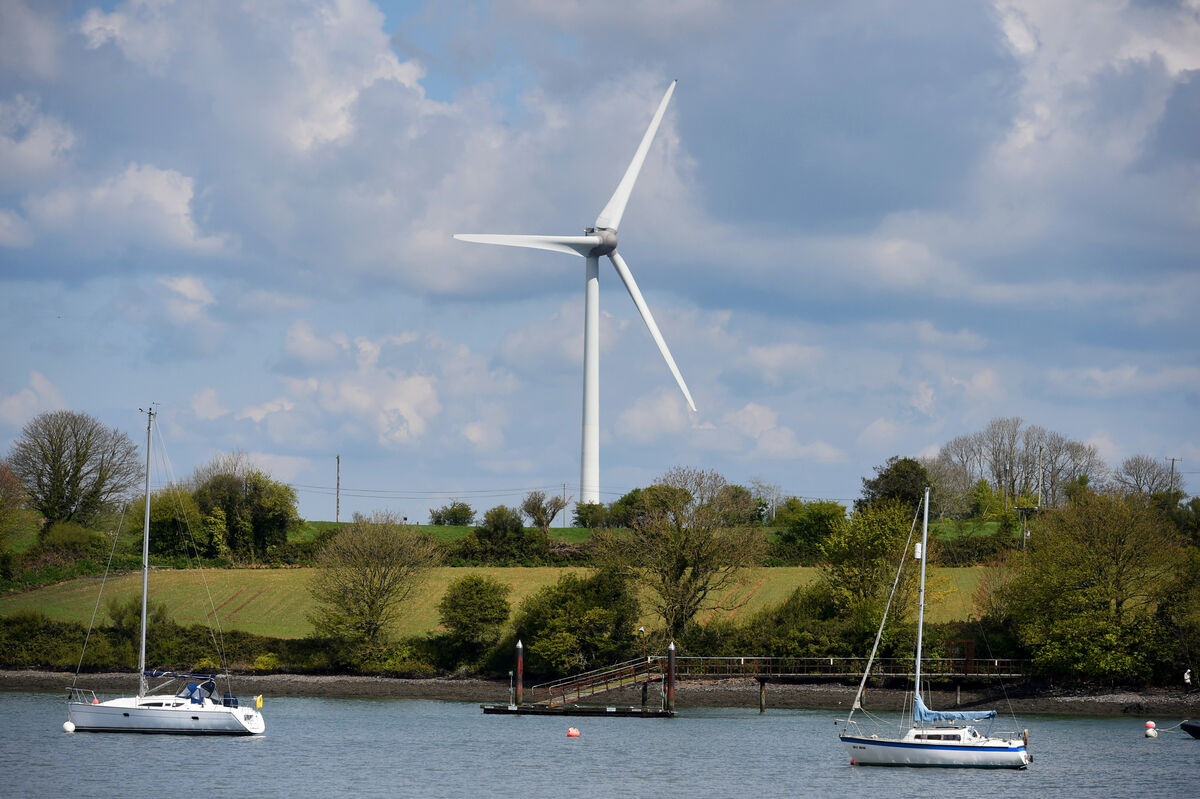
Offshore wind can be to Cork Harbour what oil was to Norwegian regions in the 20th century, a major new report on the potential of the industry claimed earlier this year.
, a joint report between Cork Chamber of Commerce, educational facilities such as Munster Technological University, the National Maritime College of Ireland, and a range of firms within the renewable energy field, says that offshore wind is leading the transformation of the global energy system.
There is "staggering growth rate of 19% — faster than any other industry", it states.
"Rapid developments in floating foundation technology are opening new markets, where floating foundations can be deployed in waters from circa 60m to 1000m depth. Floating wind has many benefits over the traditional bottom-fixed technology, such as higher capacity factors, being less visually impactful and less environmentally intrusive," it says.
Cork's Goldilocks-just-right location means its harbour should be an anchor point as the industry explodes in world importance, it states.
"The geostrategic advantages of Cork Harbour, the second-largest natural harbour in the world, means it is ideally placed to seize the benefits of new floating and bottom-fixed offshore wind projects. Cork Harbour is in the process of being transformed into an offshore renewables hub by the private sector, with circa €200m of investments and plans already underway by companies such as Green Rebel Marine, Irish Mainport Holdings, Doyle Shipping Group (DSG), Simply Blue Group, DP Energy, and Port of Cork."
By 2025, Cork Harbour should be primed and ready, according to Cork Chamber and the firms involved.
"As the maritime capital of Ireland, Cork can build on the maritime and energy infrastructure and capability that already exists, thereby positioning Cork Harbour as the de facto floating offshore wind hub in the Celtic Sea.
"Cork benefits from its location, existing port capacity, maritime track record, the industrial and energy profile of Cork Harbour, strategic port designations, the local supply chain readiness, regional infrastructure, human capital, skills and training, and the Cork ‘can do’ attitude," the report states.
Time is of the essence and political leaderships need to pave the way if Cork and Ireland are to grasp the opportunities that lie ahead, it urged.
"Decisions by Government in the next couple of months are required to ensure that projects from the Celtic Sea, including floating wind projects, will be prioritised within the measures needed to meet the target of 5GW of offshore wind to be developed in Ireland by 2030. This means expanding the envelope of opportunity from the limitations of bottom-fixed projects in the Irish Sea and facilitating Cork’s prospects to become as a major offshore wind centre, delivering jobs and economic value.
"Cork Harbour is perfectly positioned right now to support the development of offshore wind. Gearing-up for large-scale assembly and installation of offshore wind farms can be achieved via DSG’s plans to redevelop Cork Dockyard. The redevelopment of Cork Dockyard as a clean, green facility, servicing the offshore wind sector, is a progressive plan for Cork Harbour, potentially creating up to 200 direct long-term jobs alone."
Not since the 1970s has such an opportunity been handed to the region, it claimed.
"An enormous opportunity exists for a whole new industrial sector to emerge in Cork Harbour, not seen since the IDA designated the Ringaksiddy area as a cluster for pharmaceuticals in the 1970s. Policy action is needed now.
"This includes the designation of Cork Harbour as a strategic hub for offshore wind in the new National Development Plan (Ireland 2040); County Development Plan provisions for land use activities in support of offshore wind; and a Government decision to ensure that floating wind projects in the Celtic Sea are included in the Climate Action target of 5GW of offshore wind by 2030. This is key to unleashing the potential for floating wind and the opportunity for Cork Harbour.
In its introduction, the report states that suitable land was becoming scarcer for onshore wind, but there were no such barriers when it came to utilising the ocean.
"Ireland’s vast marine environment, 10 times our landmass, provides an alternative space for the construction of wind turbines. Traditional bottom-fixed offshore wind technology is typically in the form of a monopile or jacket/tripod, which can be deployed in water depths of up to approximately 50m. Rapid developments in floating foundation technology are opening new markets, where floating foundations can be deployed in waters from circa 60m to 1000m depth," it says.
Cork Harbour has all the ingredients needed to capitalise on the burgeoning industry developments, with not many others nearly as suitable across Europe.
"Only a few European seaports are currently suitable for floating wind manufacturing, assembly, and servicing. Engineers Ireland recommend the urgent identification of a seaport to support offshore development with sufficient depth, quay length and storage space8.
"The geostrategic advantages of Cork Harbour, the second-largest natural harbour in the world, means it is ideally placed to seize the benefits of new floating offshore wind projects, while also supporting bottom-fixed projects. Offshore wind development requires ports with the right mix of water depths, quayside bearing capacity, landbanks, cranage, vessels, berthage, and transport links."
It pointed to investment already being made as firms decide to get in early in the first act to establish themselves in Cork Harbour.
"The private sector has already begun to embrace the energy transition, with the decommissioning of the Kinsale Gas Fields as a milestone, by transforming Cork Harbour into an offshore wind energy hub. For example, investments of €16.5m were made in Q4 of 2020 by Green Rebel Marine and Mainport Shipping, to gear up for offshore surveys.
"Plans for a further circa €200m of inward investment are well progressed by companies such as Doyle Shipping Group and Simply Blue Energy. In January, Simply Blue Energy announced a joint venture partnership with Shell to develop the Emerald project off Cork. Shell’s entry into floating wind in Ireland is evidence of the opportunities in the Irish market.
"In February DP Energy announced a strategic partnership with Iberdrola. There are further investments planned for the Celtic Sea by companies such as SSE, Energia, ESB, and Equinor, that will galvanise Cork’s position. This new floating wind industry opportunity for Ireland has already established its roots in Cork, from where it will flourish, given the right supports."
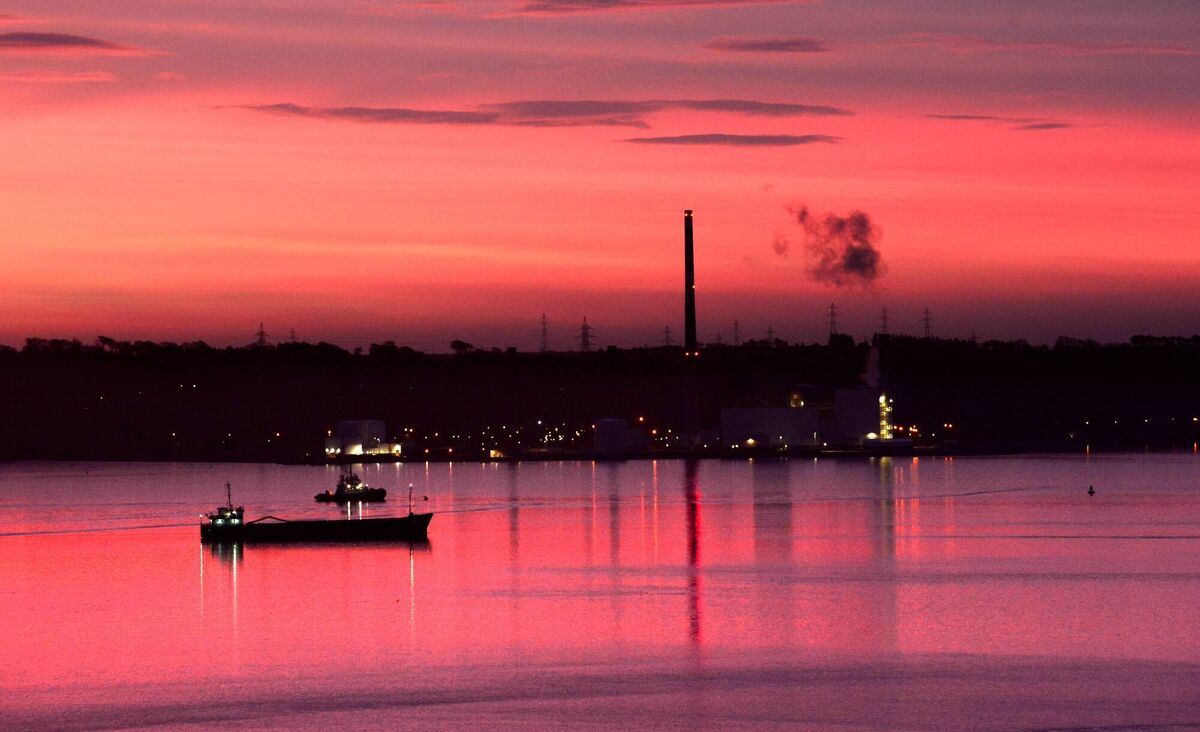
Interconnection between Cork and Continental Europe will mean the harbour will have the means to become an exporting powerhouse, the report found.
That should only be the beginning, says the report.
"Existing, proposed, or future interconnectors, such as the €1bn Celtic Sea interconnector to France, which will connect into Carrigtwohill in Cork and come onstream in 2026, can facilitate the export of electricity into European markets.
"However, for large-scale growth in offshore wind development in the Celtic Sea, it will also be necessary to explore new markets in other energy areas such as transport and heat and bulk energy export for example using the vector of hydrogen.
"Expansion of the energy market for floating wind in the Celtic Sea can be achieved by gaining access to the heat and transport markets in Ireland which are four times the size of the electricity market."
Green hydrogen production can displace traditional fossil fuels to power not only foreign firms but also those in Cork Harbour, thereby transforming a location with pollutant-reliant fuel into a haven for cleaner energy.
"Green hydrogen is produced using water electrolysis to create hydrogen and oxygen using sustainable electricity from renewable sources. This can be an alternative to fossil fuels for use in electricity, heat and transport, as well as in power generation and heavy industry, such as the industries in Cork Harbour. Advances in electrolyser technology efficiency and major cost reductions combined with the environmental and financial incentives associated with decarbonising society, in general, have made the concept of a hydrogen economy a reality."
Belfast has got ahead of the game so far, but its option are limited, unlike Cork Harbour, the report says. The same goes for the east coast and the west — Cork Harbour is the sweet spot.
"Belfast port is currently best placed on the island of Ireland with capacity to support plans for new bottom-fixed offshore wind projects in the Irish Sea in the decade ahead. However, existing capacity in Belfast will not be sufficient to meet the demand for port facilities, from the volume of offshore wind projects coming onstream in Ireland and the UK.
"Proposals for new ports on the east coast, for example, Braemore and Rosslare, are limited by factors such as water depth with regards to servicing the floating sector.
"In due course, Shannon Foynes has an important role to play for floating projects on the west coast with deep water attributes, however, it will require considerably more investment than Cork Harbour, which already has a shipyard ready to be adapted, independent of exchequer funding."
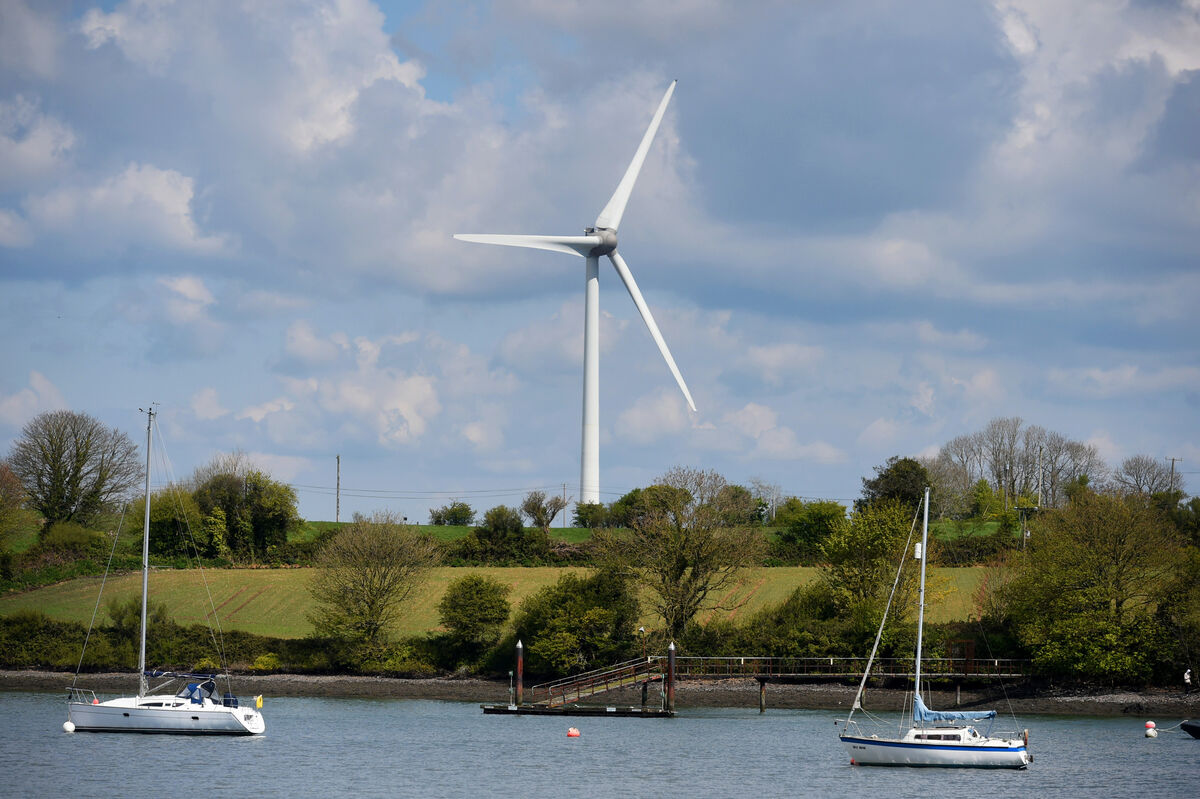
Why do supporters of offshore wind and green hydrogen believe that Cork Harbour is best-placed to capitalise on the revolution?
According to the report, its geostrategic location is the first.
- One of the largest natural harbours in the world, Cork Harbour features a deep, extensive, and sheltered waterbody.
- Proximity to the Celtic Sea, Irish Sea, and Atlantic pipeline of offshore wind projects, with the potential to support developments off the east, south, and west coasts, as well as projects from the UK and France.
- Perfectly positioned on the doorstep of some 50GW of floating wind resources in the Celtic Sea, with a pipeline of floating wind projects creating demand for high impact port assembly and installation facilities from 2025, and long-term operations and maintenance bases.
- The Port of Cork, a tier-1 port of national significance, hosts excellent modern deep-water facilities in Lower Cork Harbour, ideal to support offshore wind development.
- The privately owned DSG vision for Cork Dockyard as a strategic hub for offshore wind is an unprecedented opportunity for the region.
- The dry-dock in Cork Dockyard, the only large dry-dock in the Republic, located in Cork Harbour, is an important support facility for the offshore sector.
- The deep, sheltered waters of Cork Harbour and nearby Bantry Bay provide ideal wet storage options.
- As the maritime capital of Ireland with centuries of maritime heritage, Cork Harbour is perfectly poised to build on the maritime and energy capability that already exists, to accelerate towards a vision for 2025.
- Cork Harbour has been used for decades as the primary servicing base for offshore oil and gas exploration off the south and west coast of Ireland.
- Marine operators have a track record in offshore support activities, including towage and service vessels for the Kinsale gas field.
- In recent years, the port has increasingly been used as a landing location for wind turbines and other components of onshore wind farms.
- The dockyard has a proven track record in assembly and deployment of major structures.
- University College Cork (UCC), the Munster Technological University, and the National Maritime College of Ireland (NMCI), provide undergraduate and postgraduate talent in key areas such as engineering, environmental studies, marine science, supply chain management, nautical science, marine engineering, and marine electro-technology.
- Cork hosts world-class research infrastructure, including the LIR National Ocean Energy Test Tank Facility in UCC’s Beaufort Building in Ringaskiddy.
- An opportunity exists to further develop the innovation ecosystem established by the IMERC project in Ringaskiddy, including co-location with the naval service, headquartered on Haulbowline Island in Lower Cork Harbour.
- The IT@Cork Cluster provides the knowledge base for the type of high-tech automation systems and controls required for the operation of offshore wind farms.
- Cork Chamber of Commerce and Cobh and Harbour Chamber of Commerce, facilitate business representation, networking and services in the region (eg Cork Chamber represents 1,200 members employing over 100,000 people).
- Home of Ireland’s unique energy industry cluster, Energy Cork. Energy Cork strengthens enterprise and employment within the energy sector supported by Cork City Council and Cork County Council through their respective Economic Development Funds. Energy Cork was conceived by Cork Chamber to build on the unique opportunities for the region to secure competitive advantage in the energy sector.
To the layperson, the concepts of wind and hydrogen power may seem mired in academic, scientific, and industrial speak.
What is wind power, and what is the difference between onshore wind and offshore wind? What exactly is green hydrogen?
At its most basic, offshore wind is a concept that captures wind around the oceans in order to use it to generate energy. Winds offshore are invariably more powerful, while the structures to capture it are less visible to those on land, thereby alleviating concerns of those who fret over wind-related construction on land.
According to Cork-based MaREI — the Science Foundation Ireland Research Centre for Energy, Climate, and Marine, to give its full title — offshore wind is a clean, renewable energy that can help to decarbonise our total energy requirement in the long-term.
"It has an advantage over other forms of renewables, including biomass and solar photovoltaics, due to its low greenhouse gas (GHG) emissions and reduced environmental impact," MaREI said.
Ireland has been slow to get aboard the offshore train, according to MaREI.
"While Europe has been a leader in offshore wind, and many other countries around the world are developing capacity to leverage the benefits of this sustainable source of renewable energy, Ireland has been slow to develop offshore, choosing to focus to date on the onshore resource."
However, that is beginning to change, MaREI said.
"In fact, the first national targets for offshore wind, given in the Climate Action Plan in 2019, have been increased in the programme for government in 2020. The target is now for 5GW by 2030, with an intent to develop tens of gigawatts into the future.
"For example, the Government has indicated that 30GW of floating offshore wind (FLOW) could be developed off the west coast of Ireland going forward. The rapid development of FLOW technology, which can be deployed in deep Irish waters, is a game-changer to enable such a scenario."
According to the International Energy Agency (IEA), the development of offshore wind has slowed, if not stalled, after a burst of enthusiasm globally in 2017.
"Compared with record 32% growth in 2017, offshore wind electricity generation increased only 20% in 2018. Given its relatively small base, offshore wind growth must accelerate even further to reach the generation levels demonstrated in the SDS. The cost reductions, technology improvements and rapid deployment achieved in Europe need to be extended to other regions."
The SDS means the sustainable development scenario, in which the IEA outlines a major transformation of the global energy system, showing how the world can change course from damaging fossil fuels to the renewable and clean sources.
The number of offshore wind installations continues to grow across the world, but much faster deployment is needed to meet sustainable global goals, the IEA said.
"Grid-connected offshore wind capacity additions reached 5.9 GW in 2019, 40% higher than in 2018. Expansion is accelerating in China, while the EU returned to growth after a slowdown in 2018, with record installations in 2019."
China is strengthening its position as a leader in offshore capacity additions with 2.3 GW of new installations in 2019, followed by the UK (1.6 GW) and Germany (1.1 GW).
"Nevertheless, offshore wind annual capacity additions need to more than quadruple by 2030. Despite positive technology developments and cost reductions, growth must accelerate for the technology to get fully on track with the SDS."
This outlook cements the case being made by Ireland's offshore supporters.
Time is now of the essence, MaREI researchers said in July 2020, in the midst of the Covid-19 pandemic.
"Given the strategic national interest of offshore wind, a taskforce is recommended to mobilise and co-ordinate priority actions in the months ahead. Route to market needs to be prioritised, to decide on how Ireland, with an offshore wind energy resource, far greater than it can consume, will become an energy exporter. European funding can also be leveraged, as the Green Deal provides a stimulus to rebuild the economy post-Covid."
The pandemic, climate, and biodiversity crises have accelerated at unprecedented rates, MaREI said.
"Offshore wind is only one part of the sustainability solution, however, it can play a major role in the future security and wellbeing of Irish people, for generations to come."
What then is green hydrogen?
Green hydrogen is described as producing energy through the electrolysis of water, while eliminating emissions by using renewable energy. Its supporters say it could completely revolutionise clean energy, while its detractors say it is too cumbersome to achieve on a mass scale.
Irish researchers are now taking part in a major European project aimed at bringing green hydrogen into the renewable energy mainstream, including powering the likes of Valentia and the Aran Islands.
NUI Galway researchers Dr Pau Farràs Costa, Dr Rory Monaghan, and Dr Thomas van Rensburg, members of the Energy Research Centre at the NUI Galway's Ryan Institute, will assess the economic impacts of the Green Hysland project in Mallorca, the Spanish island.
Their research will examine whether it can be adapted in countries like Ireland.
Green Hysland is a five-year project that aims to generate, distribute, and use at least 300 tonnes of hydrogen per year produced from solar energy in Mallorca, all the while reducing carbon emissions by 20,000 tonnes per year.
The aim of the €50m project is to embed green hydrogen in the island’s whole energy system, from solar power generators which will produce the hydrogen, to gas grid operators which will distribute it and to bus operators, vehicle rental firms, homes, businesses, and hotels using it for power, heat and mobility.
Mr Van Rensburg, of the School of Business and Economics at NUI Galway, said the research meant they will be able to examine "our ability to replicate green hydrogen deployment on Ireland’s islands, including the Aran Islands and Valentia Island, with their excellent renewable energy potentials".
CLIMATE & SUSTAINABILITY HUB





